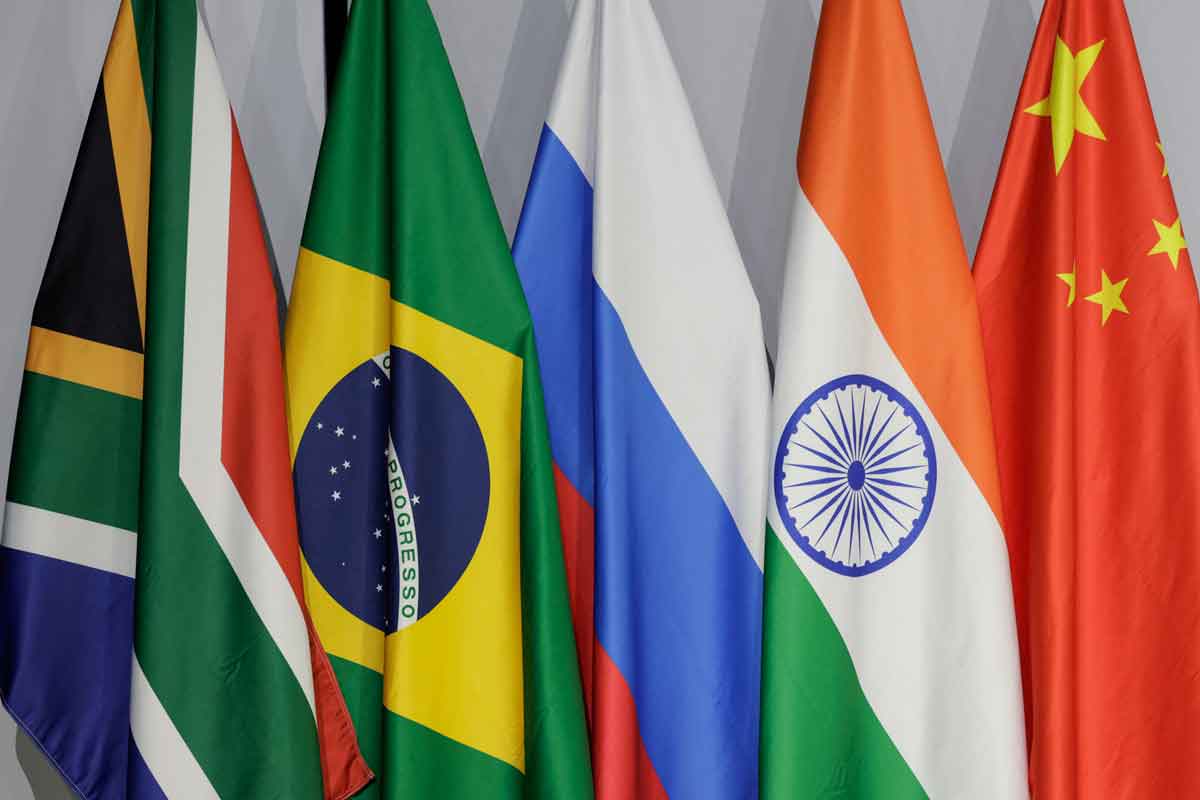On August 24, 2023, the original BRICS countries – Brazil, Russia, India, China, and South Africa – invited Saudi Arabia, the UAE, Iran, Egypt, Argentina, and Ethiopia to join the group. While the new BRICS group (assuming all invited countries join) would comprise approximately 30 percent of the world’s GDP and 45 percent of its population, few factors unite the members economically or politically.
Considering the absence of new group trade agreements, and based on the track record of economic relationships between existing BRICS countries, we do not expect materially higher trade and investment flows for new joiners.
The prospective new members are at varying developmental levels and face different economic challenges. This is highlighted by their GDP per capita, which ranges from $1,220 in Ethiopia to $51,456 in the UAE.
“We have decided to invite the
— Presidency | South Africa ?? (@PresidencyZA) August 24, 2023
• Argentine Republic ??
• Arab Republic of Egypt ??
• F Democratic Republic of Ethiopia ??
• Islamic Republic of Iran ??
• Kingdom of Saudi Arabia ??
• United Arab Emirates ??
to become full members of #BRICS from 1 January… pic.twitter.com/K405vztHnh
Moreover, the economy of one member state, China, is larger than those of all the other members combined, highlighting potential differences in the power to influence policy within the group.
Common economic goals of an expanded BRICS grouping appear to be to enhance cooperation among emerging markets, provide an alternative to developed-country-dominated forums such as the Group of Seven (G7) or the Organisation for Economic Co-operation and Development (OECD), and reduce the dominance of the US dollar in international trade. In our view, however, the diverse economic and political priorities of the member states could potentially undermine BRICS’ effectiveness.
China and India outperform other BRICS members
Real GDP growth has been varied for the original BRICS members over the past decade. The relatively strong economic performance of China and India contrasts with the results in Brazil, Russia, and South Africa, reflecting individual policy-making decisions, and geopolitical and idiosyncratic factors.
The original BRICS members have increased trade and investment among themselves but mostly with China. Trade with China averaged 25 percent of the total for Brazil, South Africa, and Russia, and 12 percent for India in 2022. Overall though, intra-BRICS exports only represented 10 percent of members’ total volumes, up from 8 percent in 2010.
Intra-BRICS investment rose more than 500 percent between 2010 and 2020; however, this reflected just 5 percent of total foreign direct investment for the group, and about 90 percent of the increase was investment into China.
BRICS countries mull common currency in long term
While BRICS countries have mulled establishing a common currency in the long term, this would be difficult given the different levels of economic development among members. A currency zone would also require members to give up monetary policy flexibility and open up capital accounts, which may not be politically agreeable for some.
In the near term, BRICS countries plan to increase direct transactions in local currencies and bypass the US dollar to reduce dependence on the US financial system. This partly reflects the currently constrained access to external financing in US dollars for some sovereigns and a broader trend of rising alternative payment systems.
The Chinese yuan will probably be the primary beneficiary of increasing trade in local currencies because it represents the biggest trading nation in the bloc. However, the key constraint on the yuan’s potential as a reserve currency remains the absence of full capital account convertibility.

Access to wealthier BRICS members and the NDB for concessional funding is likely one of the key reasons for lower-rated countries to join. The NDB was established by BRICS in 2014 to fulfil demand for infrastructure investment in member countries. The UAE and Egypt joined the bank in 2021, along with Uruguay and Bangladesh.
However, the NDB’s outstanding loan portfolio is currently small at about $15 billion, relative to over $400 billion at the World Bank and $144 billion at the Asian Development Bank as of year-end 2022.
Future funding growth will depend on higher capital contributions from members. The BRICS countries also established a $100 billion foreign currency fund as a contingent reserve arrangement in 2014 to relieve balance-of-payments crises. However, this has yet to be utilised by the member countries.
Furthermore, some members have more political aspirations for the new BRICS than others. Countries like China, Russia, Argentina, and Iran see it as a geopolitical challenger to the West. Oil-rich producers like Saudi Arabia and the UAE are seeking to expand their reach beyond the Middle East and Africa.
Meanwhile, Western-sanctioned Russia and Iran could hope to circumvent restrictions on trade and financial transactions, which if agreed to by the group may damage relations with the West. Competition and conflicts among members will likely hinder cohesive political dialogue and cooperation. China and India face disputes on border issues, Saudi Arabia and Iran have historically had a tense relationship, and Ethiopia and Egypt disagree over access to the Nile waters.
However, the geopolitical landscape is changing. For example, recent talks between Saudi Arabia and Iran, brokered by China, could signal increasing rapprochement between them. Depending on the will of the participant countries, and backed by their combined economic clout, BRICS may eventually become a more impactful political grouping.










